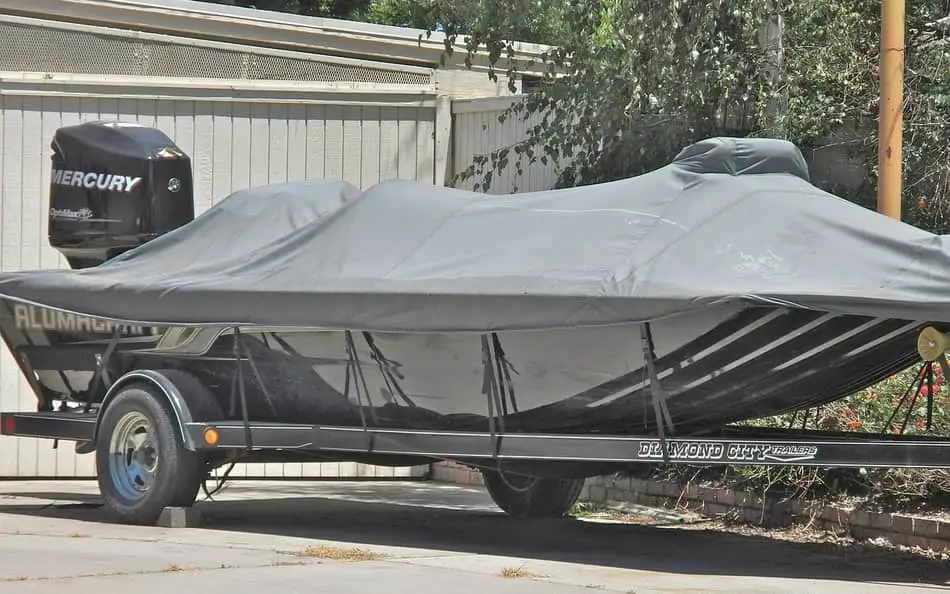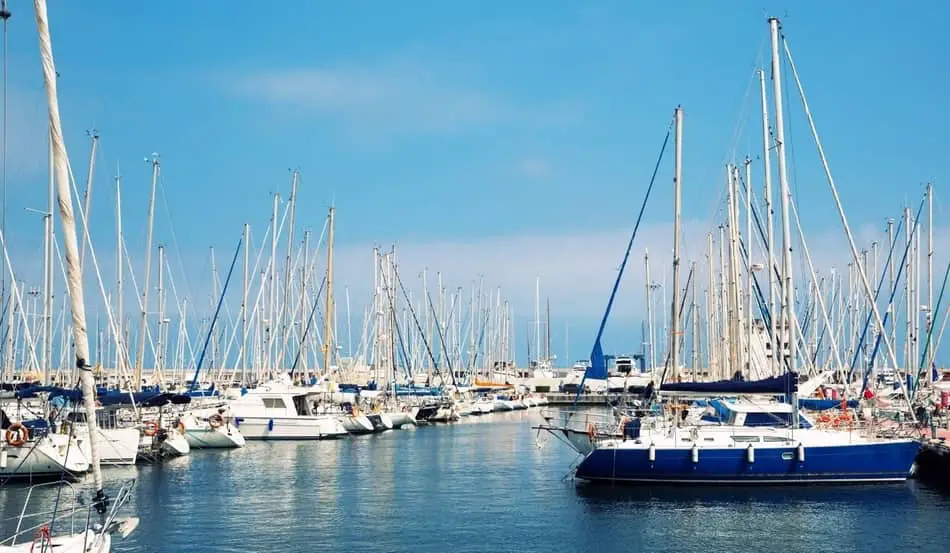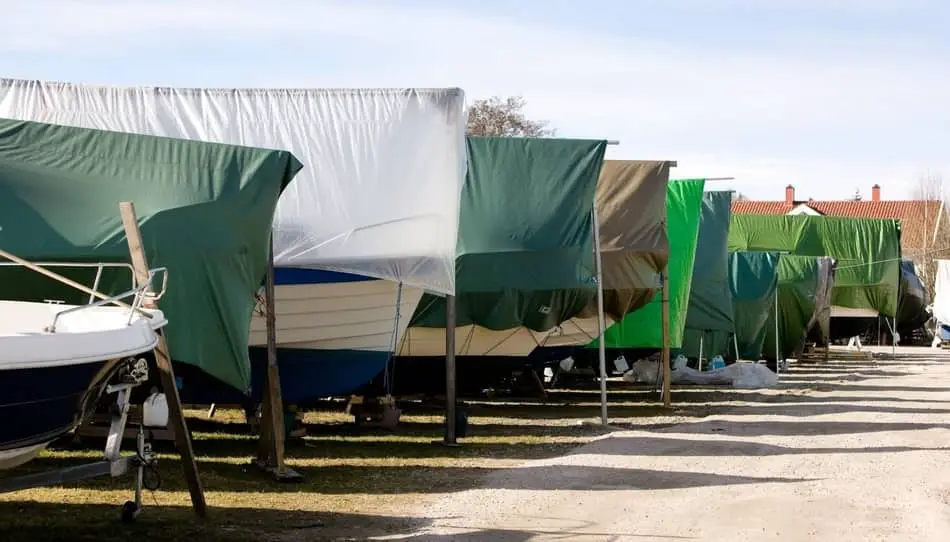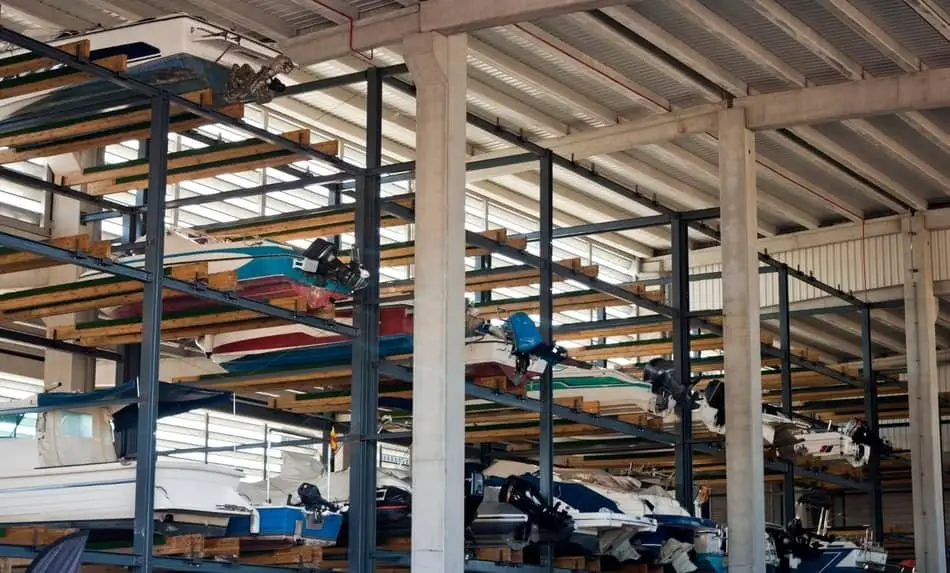Looking for places to store your boat? You’re not alone. Storing a boat is like safeguarding it against difficult situations from leaving it open. Luckily, there are several places to store a boat. We analyzed the positives and negatives for each boat storage option. So, where to store a boat?
The best places to store a boat are either at home (either in the garage or outside), at the marina (Wet Open/Covered or Dry Open/Covered), at an indoor or outdoor self-storage facility, dry-stacked storage. Choose the one for your boat depending upon the convenience and the availability.
A garage is an ideal place to store a boat. This will protect it from the elements and keep it at a relatively stable temperature. However, if you don’t have a garage, you can find accommodation at a reasonable price at indoor or outdoor self-storage facilities, dry-stacked storage, and at a marina.
Before choosing a storage option for your boat, there are some important considerations to check prior. Like the Security (how secure the storage is?), Access Hours (Can you access your boat whenever you want?), and Weather (if you’re in an area with harsh storms, storing your boat in an indoor unit is better).
So with indoor storage, outdoor storage, wet storage, and even covered boat storage space for boats, there’s something that will work for you. Below, we’ll walk through the benefits of each option based on the level of convenience, protection, and general affordability.
At Home (In The Garage Or Driveway)

Properly storing the boat at (near) the home in the garage or driveway would be the most accessible spot for your boat. However, if you don’t have a garage or outdoor space at home for a boat, you are left with indoor or outdoor self-storage facilities, dry-stacked storage, or a marina.
And a survey tells that more than 30% of the boats in the US are kept or stored at home than other storage options, such as dry-stacked, indoor or outdoor self-storage facilities, or at the marina. Mostly all small boaters keep their boats at home (in the garage or outside).
However, this might not apply for bigger boats around 25 ft and up because bigger boats can be a little more difficult to tow and store, especially if you’re a first-time boat owner. Trailering a big boat needs a big vehicle, and it is hard as well. So most big boats are kept either at the marina or at any other storage facility.
Pros Of Storing Boat At Home (In The Garage Or Driveway)
- Storing the boat at home is free of cost, and you can check the boat’s condition regularly and easily instead of going to the marina or storage places.
- You can go boating whenever you want. There are no time restrictions, such as in the case of storing at dry-stacked storages or indoor or outdoor self-storage facilities.
- Storing the boat on the blocks (AKA blocking) doesn’t require a trailer (but to bring the boat from the lake or shore requires one).
Cons Of Storing Boat At Home (In The Garage Or Driveway)
- Storing the boat outside at home may require extra care or maintenance for the boat, such as covering the boat properly to prevent any damages from rain or snow or sunlight and theft as well.
- If the boat is kept for a long time on a trailer without using it, the trailer needs to be appropriately maintained to prevent any problems, such as a flat tire.
- And you need to trailer the boat to the lake or sea to use it. Whereas storing the boat at the marina or dry-stacked doesn’t require trailering, they will keep it in the water if the storage is close to the waters.
Without a trailer, the boat needs to be placed on blocks (AKA blocking the boat), which is difficult to do than others. To know more about that, check this article on How To Store A Boat Without A Trailer?
At Marina (Wet Open/Covered Or Dry Open/Covered)

If you want to keep your boat ready to use any time of year, wet storage at a local marina might sound appealing. This means it’s already in the water and ready for you to clean, work on or take out for the day, making this a convenient option than other storage options.
Marina is one of the common places where boats are kept or stored, and it is very convenient for boaters because they can take the boat from the water quickly. And there is no need to trailer the boat from the home or any other storage place to the lake or shore.
But, storing the boat at the marina is a bit expensive compared to storing the boat at home, and the price can vary from place to place. Generally, they are four options to how you can store your boat in the marina: Wet open storage, wet covered storage, dry open storage (on the boat lift), and dry covered storage.
Other than the price, storing the boat at the marina is a good option. But there is one more concern about that, which is storing the boat for a long time in the water can damage the hull either due to growth, blisters, or corrosion, which is extra maintenance.
Related Post – How Much Does It Cost To Store The Boat At A Marina? Check this article to know the average costs of storing the boat at the marina along with the prices of 15 popular marinas across the country.
Pros Of Storing Boat At The Marina
- The essential benefit of storing the boat at the marina is you can take the boat right away from the water quickly, and you don’t have to worry about a boat trailer and its expenses.
- Storing the boat on a boat lift at the marina will keep the boat out of the water, making the boat less likely to get damaged by growth or barnacles, or corrosion.
- In some places storing the boat at the marina is inexpensive compared to other storage options such as dry-stacked storage and indoor or outdoor self-storage facility.
Cons Of Storing Boat At The Marina
- Storing the boat at a marina might be expensive in some places and depends on the season.
- Bad weather and sunlight can damage the boat if it is not placed in a covered slip.
- Keeping the boat for a long time in water can cause many problems such as growth, barnacle, blisters, etc. So, it requires additional maintenance such as bottom paint and barrier coat to prevent barnacles or algae or corrosion on the boat hull.
- You can’t ensure the security of your boat. There is a high chance of boat damage due to bad weather or while docking.
Related Post – Can A Boat Be Stored In the Waters During Winter, Year-round? Check this article to know all the precautions you need to take while storing the boat in the waters for long periods.
At Indoor Or Outdoor Self Storage Facilities

Indoor or outdoor self-storage facilities are another option to store the boat. This storage option is different from the marina and the home. The indoor self-storage facility gives extra protection to the boats from sunlight and rain than outdoors, which eventually increases the cost as well.
And mostly indoor or outdoor self-storage facilities may not be located near the lake or shore. That makes it a less convenient option for boaters because they need to go near the storage first and then need to trailer the boat from the storage to the lake or shore, which is double work.
You need to store a boat on the trailer, or blocking is needed to store the boat at these outdoor or indoor self-storage facilities. There is one more category in this storage category, which is covered outdoor storage. This stays between the indoor and outdoor storage in terms of cost and protection.
Pros Of Storing Boat At Indoor Or Outdoor Self Storage Facility
- Outdoor self-storage facilities are cheaper than storing the boat at a marina or dry-stacked storage.
- An indoor self-storage facility will be completely closed like a warehouse, and it gives more protection for the boat from sunlight, rains, snow, etc.
- Most of the self-storage facilities will have CCTV’s to keep an eye on your boat to avoid any thefts.
- You can find self-storage facilities anywhere because they are many self-storage facilities in the country.
Cons Of Storing Boat At Indoor Or Outdoor Self Storage Facility
- If the boat is kept at an outdoor self-storage facility, you may need to take extra care, such as covering the boat from the rain, snow, sunlight, etc.
- If the self-storage facilities aren’t located near the marina, you might need to rent or borrow a trailer to take your boat from the self-storage facility to the lake or shore.
- Storing the boat at indoor or outdoor self-storage facilities is expensive in some places and depends on the time (seasonality).
At Dry Stacked Storage (Open Or Closed)

Dry stacked storages are another common storage option for boats, and mostly dry-stacked storages will be located near the shore or lake, making it convenient for the boaters.
Dry stacked storages are reasonable compared to other storage types because they keep the boat in the water, and they will remove it from the water, and we don’t need to do anything.
You can see that in the above picture how the boats are kept in dry-stacked storage. They use forklifts to keep the boat on the top. Basically, there are two types of dry-stacked storages; open and closed ones.
Open dry-stacked storage can damage the boat from the sunlight and the rain if the boat isn’t covered properly. And open dry-stacked storage requires more maintenance (covering the boat) compared to the closed one since the boat is exposed to sunlight and rain.
Pros Of Storing Boat At Dry Stacked Storage
- Dry-stacked storages are safer than marinas because, at the marina, you store the boat in water, and barnacles or corrosions may form on the boat hull, or bad weather can cause any damage to the boat.
- People working at the dry-stacked storage will keep the boat in the water if you call them in advance, and they will remove the boat from the water. Meaning they will take care of the boat entirely by keeping the boat in the water and taking the boat out of the water.
- In dry-stacked storage, they will secure the boat properly using CCTV or some surveillance to avoid theft.
Cons Of Storing Boat At Dry Stacked Storage
- Generally, all dry-stacked storages will have timings. Meaning you may not be able to take the boat out of the dry-stacked storage whenever you want.
- Storing the boat at dry-stacked storage is expensive in some places.
- Some dry-stacked storage may limit the number of times you can take your boat out of the storage. If you exceed that limit, you may need to pay extra to take the boat out of the storage.
- If the dry-stacked storages aren’t located near the lake or sea, then you might need to rent or borrow a trailer to take your boat to the lake or sea.
- Mostly, all the dry-stacked storages are for small boats, not for big boats.
The Final Thoughts
The best places to store a boat are either at home (either in the garage or outside), at the marina (Wet Open/Covered or Dry Open/Covered), at an indoor or outdoor self-storage facility, dry-stacked storage. Choose the one for your boat depending upon the convenience and the availability.
A garage is an ideal place to store a boat. This will protect it from the elements and keep it at a relatively stable temperature. However, if you don’t have a garage, you can find accommodation at a reasonable price at indoor or outdoor self-storage facilities, dry-stacked storage, and at a marina.
Before choosing a storage option for your boat, there are some important considerations to check prior. Like the Security (how secure the storage is?), Access Hours (Can you access your boat whenever you want?), and Weather (if you’re in an area with harsh storms, storing your boat in an indoor unit is better).
